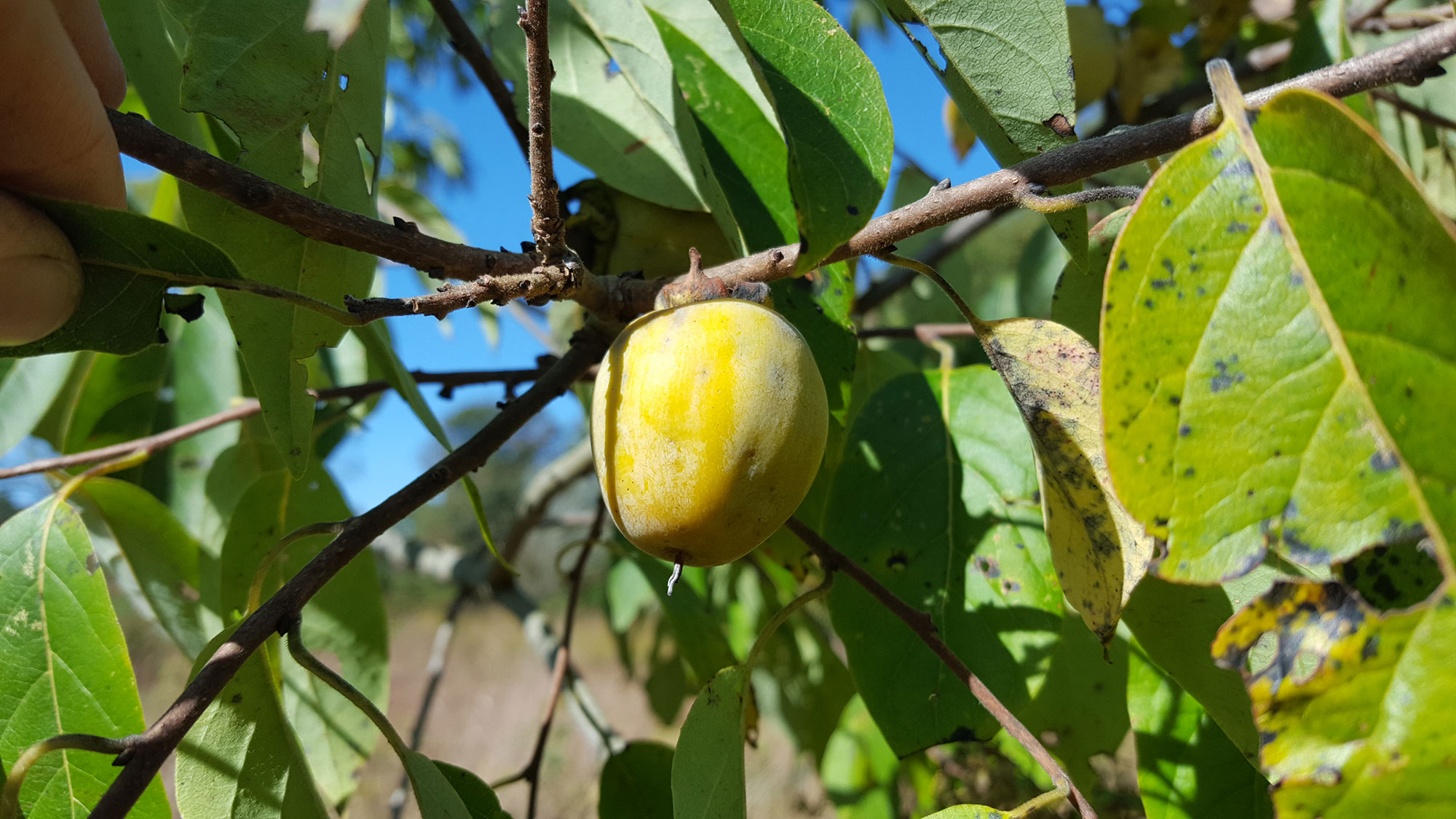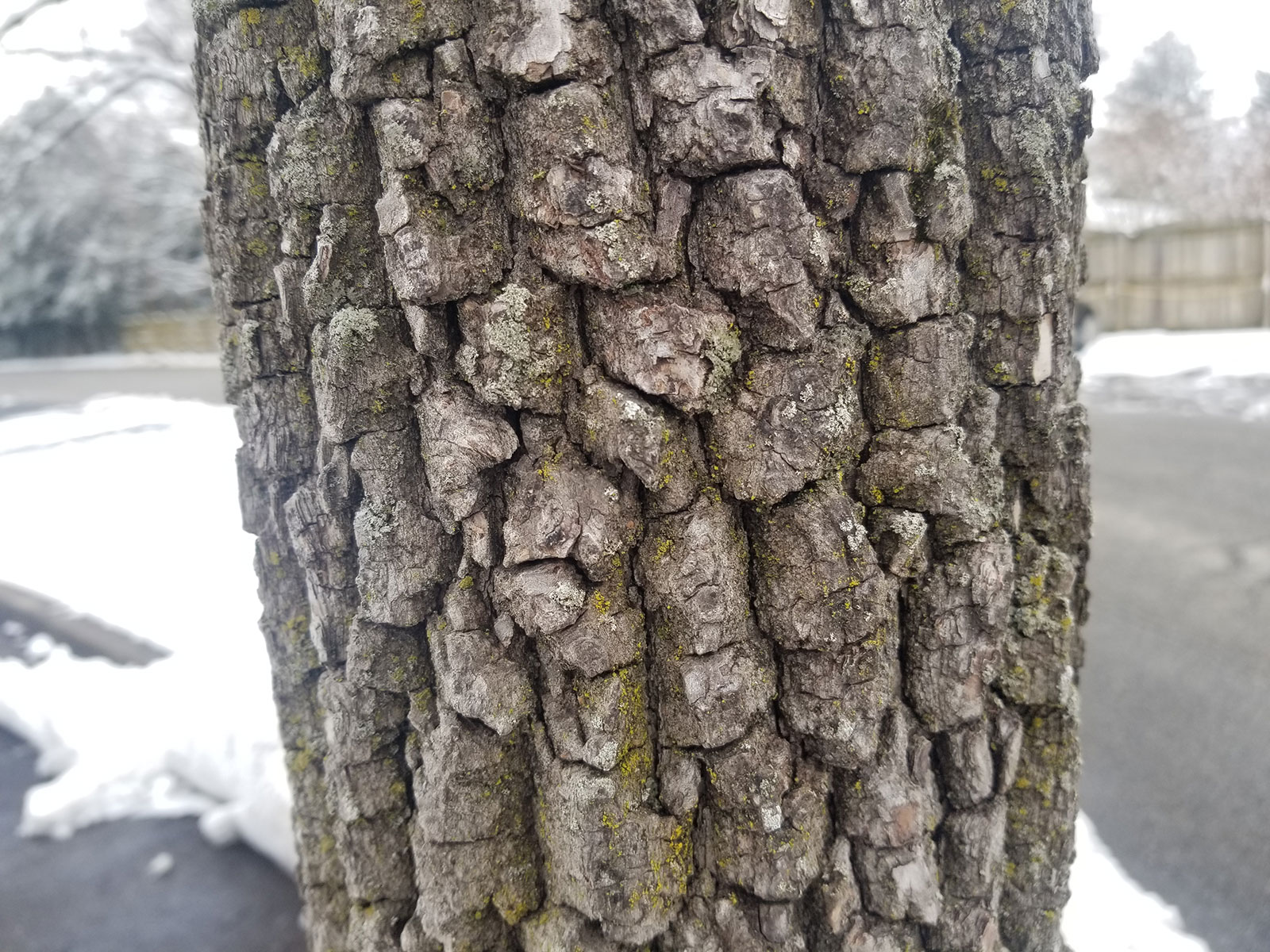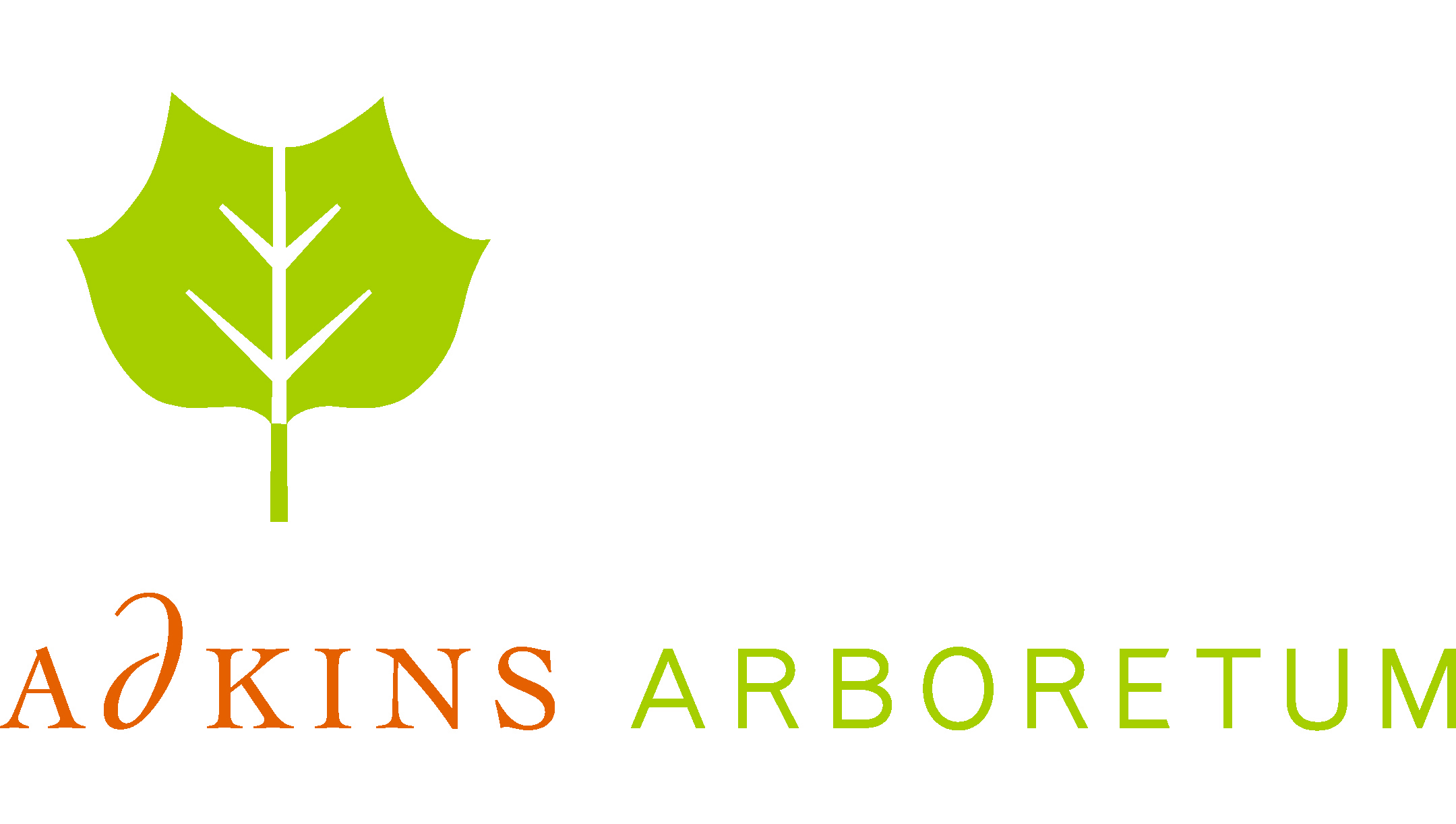
American Persimmon
Diospyros virginiana is a beautiful tree with delicious winter fruit and high wildlife value.
Scientific Name: Diospyros virginiana
Common Name: American or common persimmon; American date plum
Plant Family: Ebenaceae (Ebony family)
Etymology: Diospyros comes from the Greek words dios (divine) and pyros (wheat or grain) and together they translate to “divine fruit” or “fruit of the gods.” The word persimmon comes from putchamin, pasiminan, or pessamin, from Powhatan, an Algonquian language, meaning "a dry fruit."
Indigenous Uses
The fruits of Diospyros virginiana were used by the Cherokee, Comanche, Rappahannock, and Seminole for food and beverages. The Rappahannock rolled fruits in corn meal, brewed in water, drained, baked, and mixed with hot water to make a beer. The fruits were dried like prunes for storage.
Medicinal uses ranged from treating sore throats and mouths, indigestion, thrush, and bloody bowels. Persimmon served as an astringent for venereal disease and a wash for piles. The bark was chewed for heartburn. A bark infusion of persimmon, alder, white walnut, and wild cherry was used for toothache. Cold water poured over the bark supported bile production and served as a tea for liver health.
Edible Parts
The persimmon fruit, which usually ripens in fall, is often used in jams and baked goods. The fruit pulp can be turned into molasses and the seeds can be turned into a peanut-like oil or roasted and used as a coffee substitute. Dried leaves make a great tea high in vitamin C. The roasted seed can even be used as a coffee substitute. Overall, Diospyros virginiana is a very versatile, edible tree.
Gathering and Using Persimmons
Lay a sheet under a persimmon tree at night to collect the fruits, or return to a tree continuously to collect freshly fallen fruits. The leafy bracts of ripe persimmons fall off easily. If you harvest unripe persimmons (ripe persimmons are very sweet, soft, and wrinkled), you can throw them in a bag with some bananas or apples and this will speed up the ripening process because those fruits naturally exude ethylene gas.
Refrigerate as soon as possible and extract the pulp within 24 hours. Seeds can be pulped with bare hands or a food mill. The pulp can be frozen and thawed for later use, or dried into fruit leather. Add persimmons to fall salads, bake into breads, blend into puddings and jams, ferment into wine, or use to sweeten savory dishes.
Permaculture Functions and Considerations
Edible fruit, medicine, wood, wildlife food, biomass, organic matter, pollinator habitat, shelterbelt, rain garden, rootstock, erosion control, carbon sequestration. The seeds can be pressed for oil, a substance in high demand but rarely produced from a farm or garden. Underplanting is possible due to its deep root system. During the Civil War, persimmon seeds were used as buttons.
Habitat
You can expect to find Diospyros virginiana growing in moist soil such as on sandy lands, shales, and muddy bottomlands. It prefers well-drained soil and it is best to plant in a sheltered area or under the protection of a nurse tree, for they are tender saplings.
How to Identify
The persimmon tree is lanky and often has large open spaces between branches. The persimmon fruit resembles an orange plum and is ripe once it can easily fall off the tree. The leaves have smooth edges, are shaped like teardrops, and are in an alternate arrangement. Diospyros virginiana trees are dioecious, requiring male and female trees for pollination and fruit set. You can tell male trees from female trees because male flowers are smaller and appear in small clusters, while the larger female flower appears alone.

Diospyros virginiana has gray-black bark with an odd, blocky texture that looks a little like reptilian skin.
Wildlife Support
Beyond providing a reliable source of winter nourishment for birds and mammals, persimmon fruits are also enjoyed by box turtles. Its flowers attract bees and butterflies.
Additional Information
The wood of Diospyros virginiana is very strong and often used to make golf club heads, shoes, and billiards.
Sources
- Bir, Sara. The Fruit Forager's Companion. White River Junction, VT: Chelsea Green Publishing, 2018.
- Dodge, David. "Domestic Economy in the Confederacy." The Atlantic Monthly, August 1886.
- Hamel, Paul B. and Chiltoskey, Mary U. Cherokee Plants: Their Uses — A 400 Year History. Sylva, North Carolina: Herald Publishing Co., 1975.
- Jacke, Dave and Eric Toensmeier. Edible Forest Gardens: Ecological Design and Practice for Temperate Climate Permaculture. White River Junction, VT: Chelsea Green Publishing, 2005.
- Meredith, Leda. Northeast Foraging: 120 Wild and Flavorful Edibles from Beach Plums to Wineberries. Portland, Oregon: Timber Press, 2014.
- Mish, Frederic C. Webster's Ninth New Collegiate Dictionary Springfield, Massachusetts, 1984.
- Moerman, Daniel E. Native American Ethnobotany. Portland, Oregon: Timber Press, 1998.
- Reynolds, Mary. The Garden Awakening: Designs to Nurture the Land and Ourselves. Cambridge, England: Green Books, 2016.
- Thayer, Samuel Incredible Wild Edibles: 36 Plants That Can Change Your Life. Bruce, Wisconsin: Forager's Harvest Press, 2017.
- Weiseman, Wayne, Daniel Halsey, and Bryce Ruddock. Integrated Forest Gardening. White River Junction, VT: Chelsea Green Publishing, 2014.

